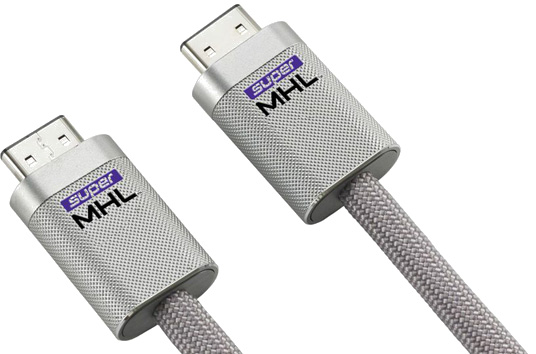Your Sanitarium.FM Account
|
Tomorrow
- 12am - Auto DJ
- 3am - Auto DJ
- 6am - Auto DJ
- 9am - Auto DJ
- 12pm - Auto DJ
Support The Sanitarium.FM! 
Or donate to us via PayPal:
|
|
Sanitarium.FM, the station the voices in your head want to listen to!
|
|
 |
In the last few years, Virtual Reality headsets have taken off as a kind of ‘next big thing’ type of hardware. Oculus were the first to come to the gaming community’s attention, with other people like Sony beginning to follow suit after. Now we’ve got an entry into the field from Razer with an open-source version.
Revealed yesterday at CES, it combines open-source software and hardware into an initiative named “OSVR” which stands for “Open-Source Virtual Reality” and there was already a headset to show off and for people to have a go with. The reason that they’re aiming to make the project open-source (revealing every detail of the headset and the software that makes it work) is that they aim to accelerate the speed at which virtual-reality headsets, the software it uses and all related technologies are being developed because they’re tired of the dev kit/prototype limbo it seems to be stuck in at the moment. In other words, if Oculus started the train, Razer are planning to increase the speed its racing along the track towards ‘perfection’.

They hope that by having everything available to the public enterprising creators can develop their own methods of use and make improvements to the model they provide. They’re even going to put together and make available what they call a “Hacker Dev Kit” and hopefully have it out for June.
The headset itself that was shown at the event used a 5.5-inch FHD display screen and used two pairs of lens, one concave and the other convex in an attempt to minimise edge distortion around the frame of your VR viewpoint. Otherwise technologically it isn’t more impressive than any other showing, but as it’s meant to be a platform on which others can build it doesn’t really need to be.
Razer’s taking a chance that their base headset will provide the means for someone to make the next big step in VR technology, and that could be just what is needed to make sure that virtual-reality headsets aren’t just a temporary craze.
January 7th, 2015 by |
| Posted in Gaming, General, PC, Technology | No Comments » |
 |
Hot off the heels of its existing MHL 3.0 cable spec that delivers 4K Video over MicroUSB and keeps the device charged, The MHL Consortium has taken the wraps off of SuperMHL, which goes even further. SuperMHL – which appears to be geared towards being a HD Cable replacement – not only increases the maximum picture resolution up to 16 times that of “Full HD” 1080p – in other words, what other media is referring to as “8K HD” – but is cable of a wider range of colours. 281,474,976,710,656 of them in fact, thanks to support for up to a 48-bit colour space, which should allow for more true-to-life shades. Future devices that support the new standard – which aren’t even available to the public as yet – will also be able to use the cable for linked communications; so theoretically if one had a TV, receiver and Blu-ray player all linked up using SuperMHL cables, then one remote could control them all.

Both ends of the SuperMHL Cable
The new standard is capable of delivering power output up to 40 Watts, even while it delivers video, meaning it will also be capable of simultaneously charging a device while you watch. 40 Watts is powerful for most high-end tablets to charge efficiently; it might even be in the range for certain laptops. As for Audio, there’s also support for all-encompassing sound technologies like Dolby Atmos and DTS-UHD for clear, crisp HD sound as well. Finally, the cable is reversible; allowing it to be used either way around much like USB Type-C. The cable technology will be available later this month – but devices that use it are likely to be a while away still, so while the technology will be in our hands shortly it will still be a long wait before we’re watching 8K TV regularly.
January 7th, 2015 by CrimsonShade |
| Posted in General, Technology | No Comments » |
 |
With the growing trend of late being to listen to music at the highest possible quality (even when it doesn’t actually make a discernible difference to the human ear), Sony took to the stage at CES today to reveal its second high-resolution music player: the Walkman ZX2. Designed both to upscale the quality of more compressed music formats and online streams using DSEE HX tech; and to keep music of all kinds sounding crystal clear with an S-Master HX digital amp, this new aluminium-bodied offering from Sony is designed to offer the best quality music whatever your format, with MP3, WMA, AAC, FLAC, AIFF, WAV and ALAC including DSD files supported at bitrates up to 192kHz/24-bits. A sizeable 128GB of internal memory is on-board, but should you have a music collection at half as big as that of one of our DJs here at Sanitarium.FM, a microSD card slot is also available for extra space; or you can use the built-in Wi-Fi to stream your music from online radio stations (cough) or download your tracks from online music stores.

In terms of the software on board, the Sony Walkman ZX2 takes the unusual step of running Android 4.2 Jelly Bean, though Sony say using such an old build of Android as the base for their new music player was a concious choice due to its stability. By being Android-built, the Walkman ZX2 will also be compatible with many music and other Apps from Google’s Play Store, although apps targeting only newer Android versions beyond 4.2 will obviously be out. You will be able to use services such as Tidal and many other high-res streaming services though. You’ll also be able to listen to the music through compatible wireless headsets through Bluetooth, which will also make use of LDAC tech for enhanced clarity – though this is likely to cut into the battery life. Still, with the device rated to last 60 hours on a single charge, there should be plenty of power available to let you rock out until you crash out if you so choose.
Sony are not yet confirming a price point for the new device, which press rumours place at a range around $1,100 to $1,200; however, representatives state that a final decision on pricing will be made soon in time for the device’s planned release this spring.
January 6th, 2015 by CrimsonShade |
| Posted in General, Music, Technology | No Comments » |
 |

Washing clothes in a washing machine can be a bit of a nightmare when you have lots of different types. You might have heavy fabrics that was better at 40C but also delicates that could be damaged if washed above 30C. You might have jeans with heavy soiling that need extra cleaning power; but you might have silk or other thin fabrics that need a lighter touch. Often these things can’t be washed together, requiring you to split them into separate loads and wash one at at time, waiting an hour for one load to completely wash before putting in another.
LG think there’s a better solution.
Look at the bottom of your washing machine. You’ll probably find it has a pedestal – basically a chunk of empty plastic that helps raise the machine higher up the ground. While this can reduce some of the shakiness of the machine and reduce the reach required to load it up, that pedestal is really just wasted space – so why can’t we utilise it? Revealed at CES last night, LG’s crazy new solution is the Twin Wash, a slimline washing machine designed to fit in the pedestal space underneath your existing washing machine to give you a second, smaller, independently-ran drum you can slide out. Rather than purchase a single unit, the Twin Wash drum can be purchased separately and integrated with any of LG’s most recent models of front-loading washing machines. The company guarantees the machine’s slim inverter direct-drive motor technology with a 10-year warranty; while the machine itself will also come equipped with the company’s signature smart diagnosis feature that allows faults to be determined easily by support techs over the phone.
LG are yet to comment on pricing an availability.
January 6th, 2015 by CrimsonShade |
| Posted in General, Technology | No Comments » |
 |
A new Steam beta client was rolled out yesterday. It contains an element that can be important for PC gamers, especially if you’re the sort to screencapture what you’re doing in an attempt to edit videos for Youtube.
The new feature is an FPS counter, which although small was something you could only previously do via a game’s built-in FPS counter, through a third-party program like FRAPS or various GPU addons/programs. Maybe you still prefer to use one of the previous methods if you’re used to them, but in case you’d like to try the Steam counter here’s the instructions to get it working for you by opting into the Steam client beta.
- Go into Steam, and click the “Steam” menu option in the top left.
- Go to “Settings”.
- In the settings menu, you should default onto the “Account” sub menu. Find the “Beta participation” section, and click the “Change” button.
- Here, you can choose to opt into the Steam client beta. Doing so will require you to restart the Steam client after a small update.

January 4th, 2015 by |
| Posted in Gaming, General, PC, Technology | No Comments » |
|

